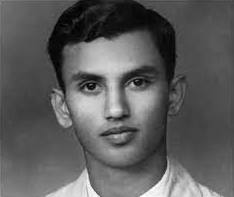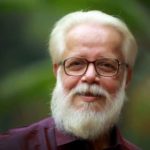Udupi Ramachandra Rao Age, Death, Wife, Children, Family, Biography & More
| Bio/Wiki | |
|---|---|
| Other Name | U. R. Rao [1]ISRO |
| Nickname(s) | Rao Bhava, Ramudu [2]Daiji World |
| Names earned | The Satellite Man of India [3]ANI |
| Profession | Indian space scientist |
| Famous for | • Being the chairman of the Indian Space Research Organisation from 1984 to 1994 • Pioneering India's first satellite launch Aryabhata in 1975 |
| Physical Stats & More | |
| Eye Colour | Black |
| Hair Colour | Semi-bald |
| Career | |
| Positions held | • Chairman of the Governing Council of the Physical Research Laboratory in Ahmedabad and Nehru Planetarium in Bengaluru • Chancellor of the Indian Institute for Space Science and Technology (IIST) in Thiruvananthapuram • General President of the Indian Science Congress Association, West Bengal (1995) • Vice President of International Astronautical Federation (IAF), Paris (1984-1992) • Co-Chairman of the National Centre for Antarctic and Ocean Research, Goa (2012) • First chairman of Prasar Bharati, New Delhi (2002) • Chairman of Karnataka Science and Technology Academy • Chairman of Bangalore Association of Science Education-JNP • Chancellor of Babasaheb Bhimrao Ambedkar University, Lucknow • Member of Central Board of Directors, Reserve Bank of India • Additional Director of Bharatiya Reserve Bank Note Mudran Private Ltd., Bangalore • Chairman of Governing Council of Indian Institute of Tropical Meteorology, Pune |
| Awards, Honours, Achievements | • Padma Bhushan (1976) • Padma Vibhushan (2017)  • Life Time Achievement Award constituted by ISRO and Astronautical Society of India (ASI) by Dr A. P. J. Abdul Kalam (2007) • Satellite Hall of Fame (2013) • Electronics Man of the Year Award by ELCINA (1994) • Aryabhata Award (1995) • Jawaharhal Nehru Award (1995) • Press Bureau of India Award (2003) • Group Achievement Award by NASA, USA (1973) • Frank J Malina Award (1994) • Eduard Dolezal Award of ISPRS (2000) • Theodore Von Karman Award (2005) • Ranked by the Space News Magazine among the top 10 international personalities for making a difference in civil, commerce and military space in the world since 1989 (2004) Note: He won many other National and International awards. |
| Personal Life | |
| Date of Birth | 10 March 1932 (Thursday) |
| Birthplace | Adamaru, Udupi, Karnataka (then South Canara district, Madras Presidency, British India) |
| Date of Death | 24 July 2017 |
| Place of Death | Indiranagar, Bengaluru, Karnataka |
| Age (at the time of death) | 85 Years |
| Death Cause | Prolonged illness and age-related health issues [4]The Hindu |
| Zodiac sign | Pisces |
| Nationality | Indian |
| Hometown | Adamaru, Udupi, Karnataka (then South Canara district, Madras Presidency, British India) |
| School | • Christian High School, Udupi • Veerashaiva College, Karnataka |
| College/University | • University of Madras, Chennai, Tamil Nadu (1952) • Banaras Hindu University, Varanasi (1954) • Gujarat University, Gujarat (1960) |
| Educational Qualification(s) [5]The Indian Express | • Bachelor of Science from Madras University • Master of Science from Banaras Hindu University • Doctor of Philosophy from Gujarat University |
| Religion | Hinduism |
| Caste | Brahmin |
| Relationships & More | |
| Marital Status (at the time of death) | Married |
| Family | |
| Wife/Spouse | Yashoda Rao (scientist) |
| Children | Son- Madan Rao (faculty at the National Centre for Biological Sciences, Bengaluru) Daughter- Mala (architect) |
| Parents | Father- Lakshminarayana Acharya (worked in a hotel) Mother- Krishnaveni Amma |
| Siblings | Brother- 2 • U. Krishnamorthy Rao • Marapalli Govinda Rao (economist) |

Some Lesser Known Facts About Udupi Ramachandra Rao
- Udupi Ramachandra Rao was an Indian space scientist and chairman of the Indian Space Research Organization between 1984 and 1994.
- He had an interest in science since childhood. He aspired to serve the armed forces as an emergency commissioned officer after completing his education, but physicist Vikram Sarabhai advised him to conduct research.
- In 1954, he joined Physical Research Laboratory (PRL) to study PhD under Vikram Sarabhai. In an interview, he said that he was offered Rs. 200 to study PhD under the other scientist, but he chose to study under Dr Vikram Sarabhai. After pursuing his PhD, he worked as a faculty member at the Massachusetts Institute of Technology, Cambridge. After working at MIT, he started working as an assistant professor at the University of Texas at Dallas. After working as a professor, he worked as a cosmic ray scientist under Dr Vikram Sarabhai.
- In 1966, he returned to India from the US and started working as a professor at the Physical Research Laboratory, Ahmedabad.
- In 1972, he established satellite technology in India to use space technology for development.
- In 1972, Rao went to the Indian Institute of Science (IISc) and asked the director to provide him with students who were willing to learn rocketry science. He trained the students to make the satellite Aryabhata at the industrial sheds in Peenya.
- Rao, along with his team successfully built the Aryabhata satellite which was launched in 1975. Later, the picture of the satellite was printed on the two rupees note.
- He contributed to making over 18 satellites including Bhaskara 1 and 2, APPLE, Rohini, INSAT-1 and INSAT-2. In an interview, he talked about why India should make its own satellites. He said,
It saves the nation a lot of money. INSAT 2B, which we sent up last month, would have cost us Rs 300 crore in foreign exchange if we had bought it. But building it here cost us only Rs 78 crore. We build launch vehicles too at least a third cheaper than elsewhere. That’s because in hi-technology almost 70 per cent of the costs go in scientific and engineering man-hours and in India it comes very cheap.”
- He conducted many experiments on Pioneer and Explorer spacecraft and made the concept of solar cosmic-ray and the electromagnetic state of interplanetary space clear.
- While he was working in ISRO, he took the responsibility for the launch of INSAT satellites. The INSAT satellites provided telecommunication to many remote areas in India. During the 1980s and 1990s, the landline system gained a lot of popularity.
- In 1985, he took charge as the Chairman of the Space Commission and Secretary of the Department of Space. He made developments in rocket technology that led to the launch of the ASLV rocket in 1992.
- In 1991, he contributed to the making of the geostationary launch vehicle GSLV and cryogenic technology.
- In 1992, Rao received a call from the commissioner of Police of Bengaluru telling him that Rao had escaped a kidnap by some people, who wanted to gain prominence by abducting Rao. The police asked him not to go out of the house without an armed personal security officer.
- After the failed attempt of the launch of PSLV in 1993, he helped in making the operational PSLV launch vehicle that took an 850 kg satellite into orbit in 1995. In an interview, he talked about the failed launch of the satellite and said,
The launch, in our opinion, was 90 per cent successful. But space is an unforgiving business. Even a one-per cent error is enough for us to fail in the mission’s objective of launching a satellite into orbit. But in terms of new technology it has been the greatest scale-up we have ever done. And all the major motors performed beautifully. The critical sequences in the most difficult powered phase through the earth’s atmosphere went without a hitch.”
- He was the first Chairman of Antrix Corporation, the commercial hand of ISRO.
- He was elected as an associate of many educational institutions including the Indian Academy of Sciences, Bengaluru, Indian National Science Academy, New Delhi, National Academy of Sciences, Uttar Pradesh, Institute of Electronics and Telecommunications Engineers, Chandigarh, International Academy of Astronautics, Paris, and Third World Academy of Sciences, Italy.
- In June 1997, he was elected as the chairman of the United Nations – Committee On Peaceful Uses of Outer Space (UN-COPUOS) and the UNISPACE-III Conference.
- In 2004, he made a report on technical education in India that created a lot of issues. Through his report, he proposed a 30 per cent slash in the annual fees at the Indian Institutes of Management. In an interview, while talking about the same, he said,
Private self-financing institutions are charging a lot of money. For example, in Chennai, the fee paid by a student was much as Rs 30 lakhs for medical seats! The directors of various medical institutions, they even offer something called a package deal. That is, you pay upfront one crore, and in seven years you get a guaranteed MD or MS degree. What kind of nonsense is this! I mean, who can afford this kind of money, unless you have black money?”
- In April 2007, he was elected as the chairman of the 30th International Antarctic Treaty Consultative Committee Meeting held in Delhi.
- In 2007, when he was serving as the fourth president of the Centre for Space Physics, he changed the name of the body to Indian Centre for Space Physics.
- He received Honorary Doctrine of Science (D.Sc) from many universities including Mysore (1976), Calcutta (1981), University of Bologna (Italy) (1992), and Madras (Anna University) (1994), and many more.
- On 15 May 2016, he became the first Indian to be inducted into The International Astronautical Federation (IAF).
- On 10 March 2021, Google paid tribute to him by making a Google Doodle in honour of his 89th birthday. In the description, it wrote, ‘Your stellar technological advancements continue to be felt across the galaxy.’
- He had written the books, ‘Perspectives in Communications’ (1987), ‘Space and Agenda 21 – Caring for Planet Earth’ (1995), and ‘Space Technology for Sustainable Development (1996).’
- He had also published more than 350 scientific and technical papers on topics like cosmic rays, astronomy, space applications, satellite, and rocket technology.
- According to some reports, before his death in 2017, he used to visit his office at ISRO headquarters.
- His hobbies included playing cricket.
- On 1 July 2022, a film titled ‘Rocketry: The Nambi Effect’ starring Mohan Raman as Udupi Ramachandra Rao was released in theatres.
References/Sources:

















